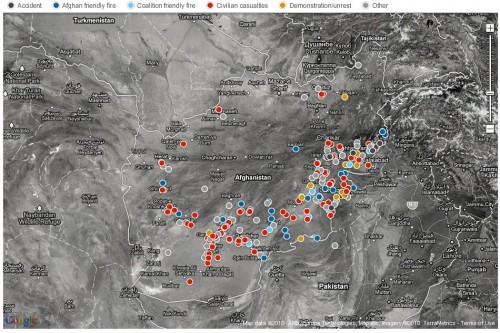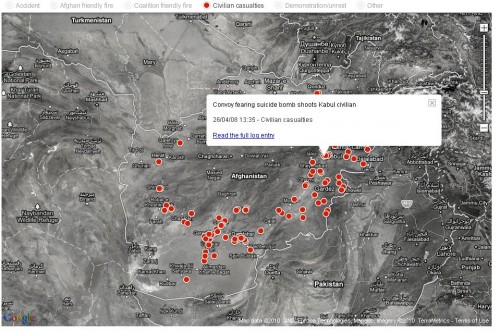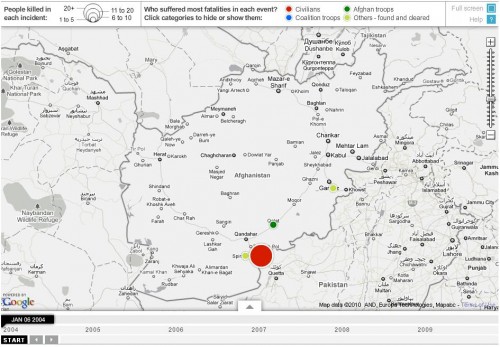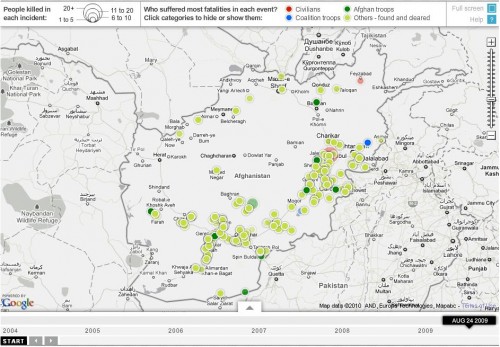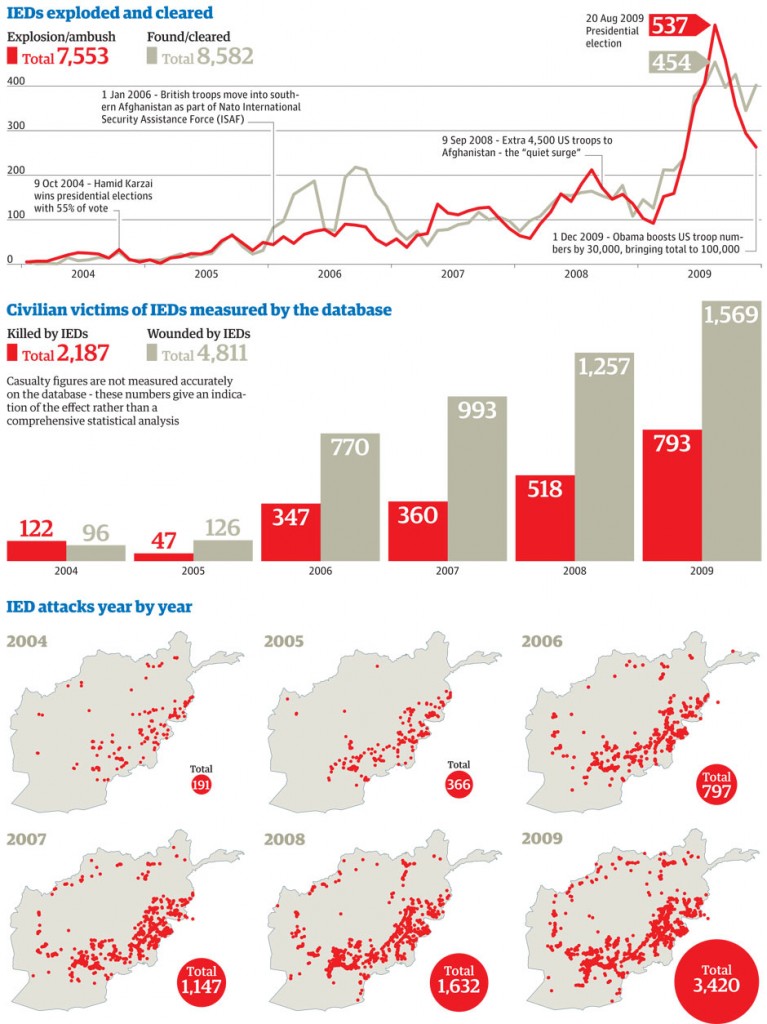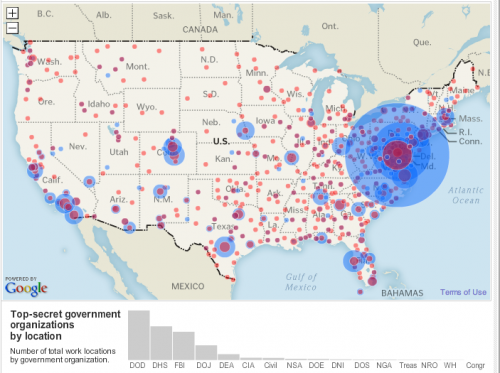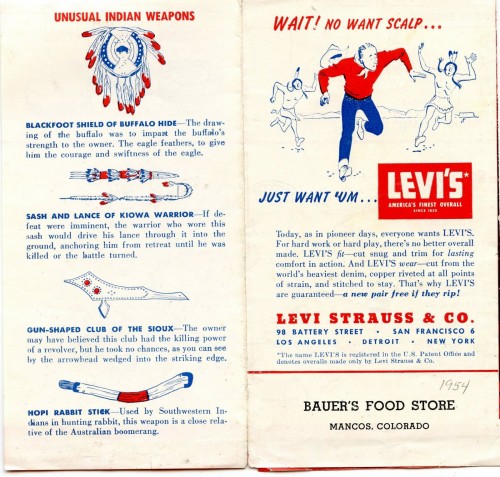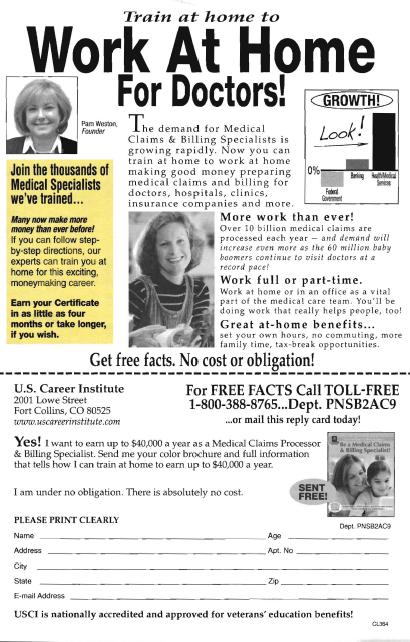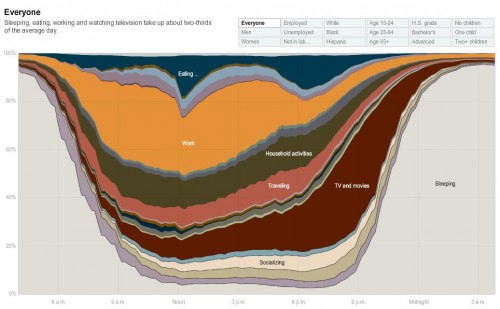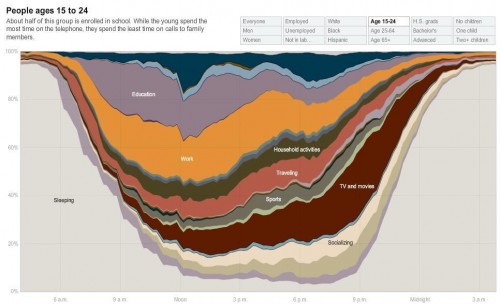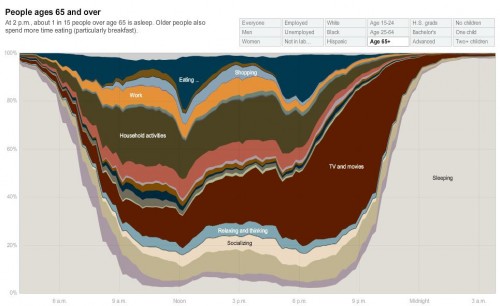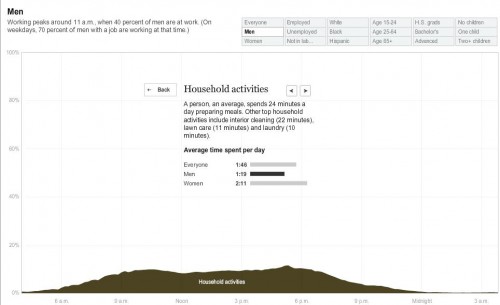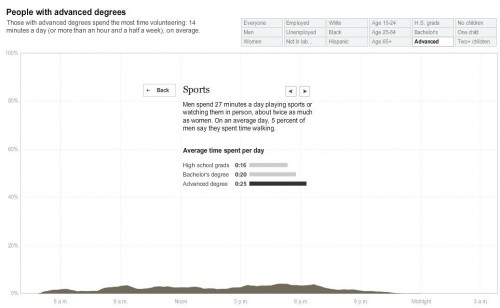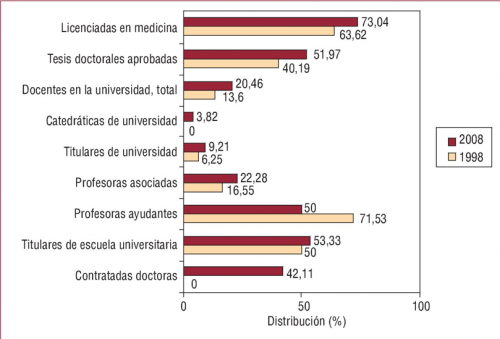Henry H. sent in a link to an interactive map at the Guardian based on the recently leaked collection of over 92,000 records about the war in Afghanistan. The map shows the location of incidents in the reports broken down by category: accident, Afghan friendly fire, Coalition friendly fire, civilian casualties, demonstration/unrest, and other:
You can hide any of the categories you want to get a better picture of only some of them, and if you roll over a dot it will give you a brief summary with a link to the full report about it. Here’s the map with everything hidden except civilian casualties and the summary of one incident:
You can also see the locations of all IED attacks that occurred on any day between January 1st, 2004 and January 1st, 2010. The size indicates the number of people killed and the color tells you the category of most of the casualties (civilians, Afghan forces, etc.). Here’s the map from January 6th, 2004 (the light green indicates that an IED was planted but that it was found and defused without any casualties):
Compare to the map for August 24, 2009, which shows that the incidence of attempted IED attacks has gone up significantly, though most of them that day were discovered before they harmed anyone:
I can think of a possible explanation for the increase in the use of IEDs over time. One could be that their use diffused from other war zones, particularly Iraq, and were increasingly adopted as a technique in Afghanistan; perhaps Afghans opposed to the Coalition weren’t familiar with IEDs in the early years of the invasion and they were therefore relatively infrequent. The other, which doesn’t exclude the first, is that it indicates an increase in resistance to the Coalition forces and their Afghan allies over time.
The increase in the number of IEDs that are discovered and defused before they go off would seem to show how groups adapt to forms of warfare; presumably the Coalition forces have become more aware of the danger of IEDs and thus look out for them more and are more skilled at clearing them.
I might be totally wrong on both counts, so if you have other thoughts, please share them.
More data on IED attacks over time, including civilians wounded:
It’s a fascinating resource for information on the war. I think it’s really interesting as an illustration of the rationalization and bureaucratization of warfare by the U.S. military: that is, events are carefully categorized and described, and military leaders have an enormous amount of data them. While individual soldiers may very well experience war as chaotic or disorganized, those overseeing it have a wealth of information that methodically distills that chaos and disorganization into statistics associated with particular events whose location is clearly identified.

